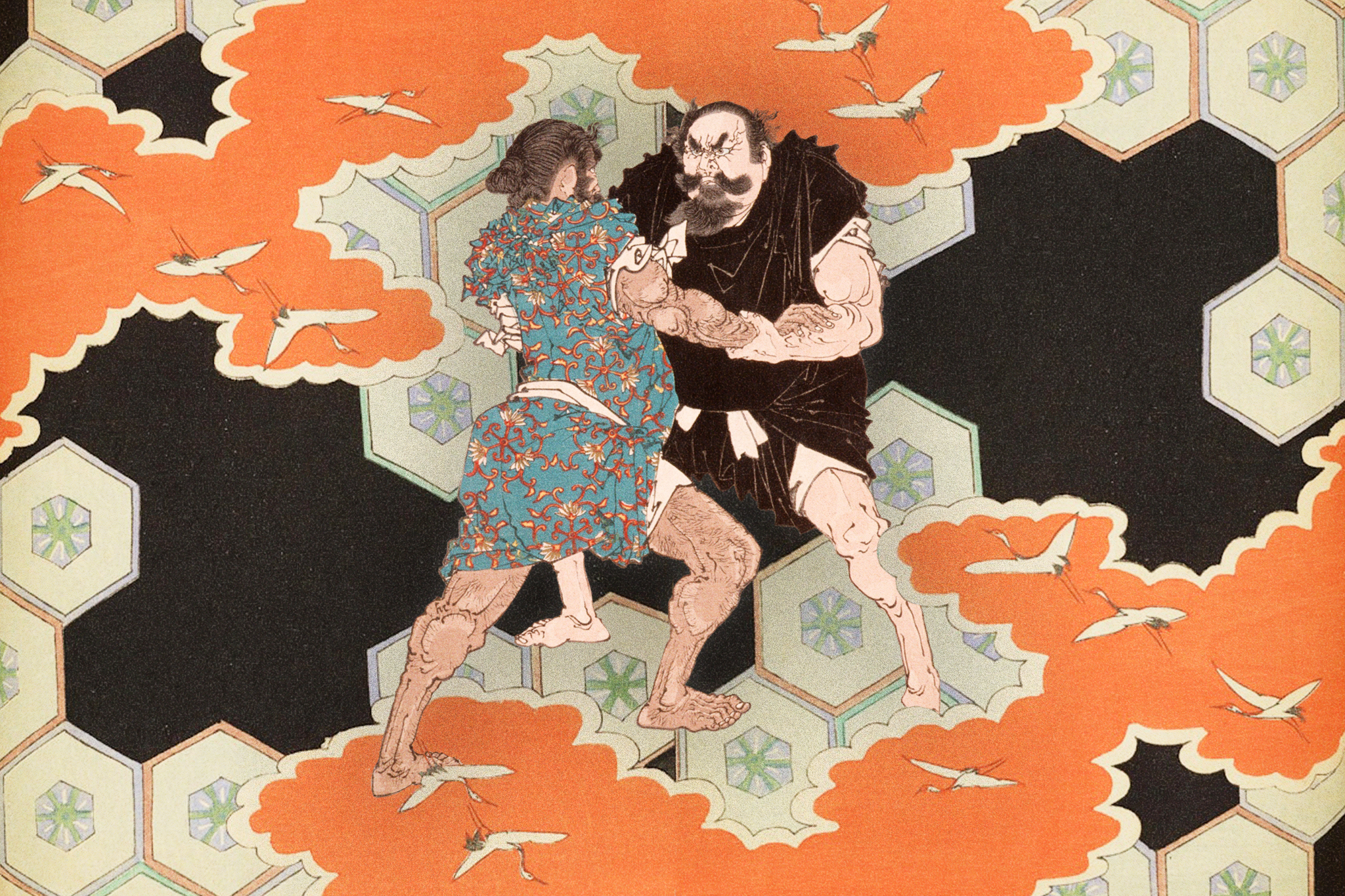Sumo is a beautiful sport with a long history full of amazing stories. Based on the Sumo Yurakuzu Byobu (1605) folding screen painting showing an unidentified dark-skinned character mid-grapple, some researchers have proposed that Yasuke, a 16th-century Black samurai, was also a sumo wrestler. But Japan’s national sport also has its less-than-inspirational side that’s more shocking than the Netflix sumo drama Sanctuary, which showed a wrestler’s ear being slapped right off his head. Here we are showing some of the most horrifying incidents from the history of sumo.
The First Recorded Sumo Match Ended in Death
According to Book VI of the Nihon Shoki, the second-oldest written record of Japanese history completed in 720, the first ever sumo match took place in the year 23 B.C. It all started when courtiers of Emperor Suinin brought him news of a man named Kuyehaya (also spelled “Kuehaya,” “Kehaya,” or “Kuhaya”) from the village of Taima in modern-day Nara Prefecture, who could supposedly bend hooks and break horns with his bare hands. Claiming to be the strongest in all Japan, he was viewed as a threat to the authority of the Imperial Court. It was, therefore, decided that he had to be dealt with.
The emperor summoned one Nomi no Sukune, a simple yet mighty potter from Izumo, and ordered him to battle Kuyehaya in what is widely regarded as the first recorded sumo match. The Nihon Shoki says that Sukune brought down his opponent with a kick that broke his ribs, then killed him with a kick to the back, which was later commemorated by naming their battleground “Koshioreda” — The Field of Broken Backs.
It might surprise some to hear that the first sumo match was decided via a kick, a move that’s not permitted in the modern version of the sport. However, before its rules were codified, sumo was closer to MMA or pankration, with punches, gouges and kicks being very much on the table. As was death. In fact, for the first few centuries, sumo often operated on the Thunderdome model: two men entered, one man left alive.

Tokyo’s Ryogoku Kokugikan | Image by Ivan Roth via Shutterstock
The Rules Against Wrestlers Driving Were Forged in Blood
Sumo has a lot of rules that casual fans may not be aware of, like how junior wrestlers who haven’t yet climbed the ranks must get around in a yukata (which literally means “bathing cloth”) and geta wooden sandals all throughout the year. This can be a little uncomfortable when the temperature drops, since another Japan Sumo Association rule prohibits active wrestlers from driving a car.
Due to their massive size, sumo wrestlers may have trouble putting on a seatbelt or operating a steering wheel properly, so the decision does make sense. Unfortunately, the rule was remedial rather than preventive and only came about in 1985 after high-ranking wrestler Mitoizumi Masayuki caused a serious collision while driving. What’s even more unfortunate, though, is that not all wrestlers heeded the ban.
In 1999, wrestler Akinoshima Katsumi struck a person on a motorcycle with his vehicle, and in 2007, Kyokutenho Masaru rear-ended a car waiting for the light to change, resulting in injuries to the other driver.
The most tragic case, however, is the one from 2000 when Toki Susumu ran a red light in Osaka and fatally hit a pedestrian. After the incident, he retired… from an upcoming tournament. He stayed in sumo for another six years and ultimately only suffered a two-month-long house arrest, a 20% pay cut and demotion to the juryo division for taking a human life.
Legend Says That One of the Most Famous Sumo Wrestlers in History Literally Disarmed His Opponent
Raiden Tameemon (1767–1825) reportedly measured 1.97 meters in height and weighed 169 kilograms but was said to be incredibly fast for his size, befitting his “Raiden” wrestling moniker, which comes from the name of the Japanese god of lightning. But it was his strength that people tended to focus on.
There are many legends and stories about Raiden, such as him working the field in his pre-sumo days with a 100-kilogram rock tied to a plow or referees banning him from using certain moves because he was so powerful, meaning his matches ended too quickly. In another legend about him, he supposedly used one of those banned moves — the single overhook — and accidentally ripped off his opponent’s arm.
This probably didn’t really happen and might have been Raiden’s fans trying to draw parallels between their favorite wrestler and another “first” sumo match in history. We already talked about the one from the Nihon Shoki, but according to the Kojiki chronicle from 712, sumo was born when the god Takeminakata-no-Kami challenged fellow deity Takemikazuchi-no-Kami to a test of strength and got his arm crushed “as though it were a young reed,” which was then “[thrown] away.” So, say what you will about the world of modern sumo: it may be ridden with scandals but at least the losers are leaving the ring alive and with the same number of limbs that they entered it.









